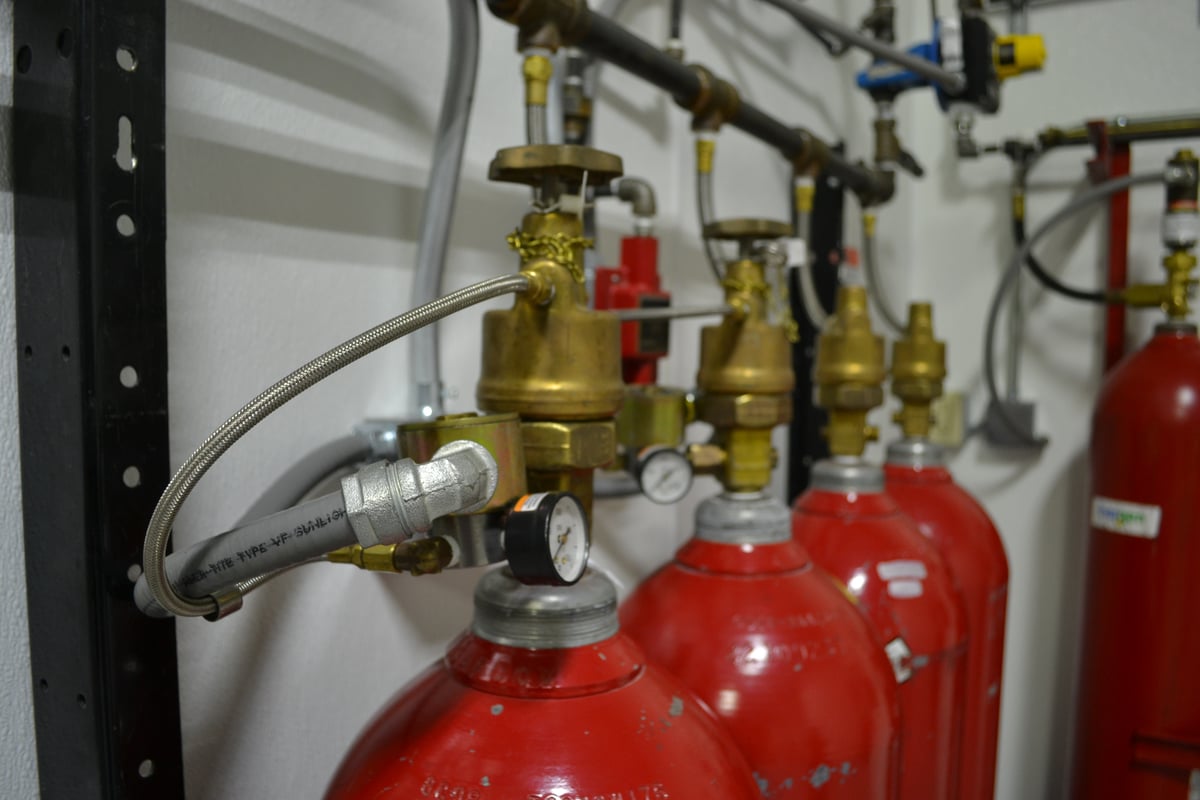
A fire suppression system contains and extinguishes fires at the source by detecting warning signs such as heat and smoke. Some of these systems are manual, but they will usually automatically apply a substance after a fire is detected. Fire suppression systems are necessary for any facility, not only to protect your staff and customers but also to protect your equipment and the building itself.
The Different Types of Fire Suppression Systems
If your building has an old or outdated fire suppression system, it is likely time to make an upgrade. The next step is deciding which one is right for your facility’s needs.
Wet Chemical Suppression Systems
Wet chemical suppression systems contain aerosols or chemicals such as potassium acetate, potassium citrate, or potassium bicarbonate, which are ideal for extinguishing grease fires. The suppressant liquids act quickly and effectively to tamper flames, producing foam to cool cooking oils and fats, preventing the flames from heating up and reigniting. If you operate a commercial kitchen, this is the best option for you.
Dry Chemical Suppression Systems
Dry chemical suppression systems are ideal for buildings that can’t safely use water or wet chemicals to suppress fires. Examples include unoccupied industrial areas that contain hazardous materials or flammable liquids and facilities with live electrical equipment. Dry chemicals include sodium bicarbonate, potassium bicarbonate, or monoammonium phosphate.
Similarly, foam suppression systems are best used in large areas with flammable or combustible liquids, such as:
- Aircraft hangars or jet engine testing facilities
- Warehouses with flammable liquid storage
- Processing areas
This system effectively extinguishes flames, keeps fires from reigniting, and protects flammable materials.
Clean Agent Suppression Systems
Clean agent suppression systems are also good for facilities with equipment or materials that are susceptible to water damage. It springs into action the moment that smoke or fire is detected, and eliminates potential damage to your facility’s valuable equipment or assets. Clean agents include 3M Novec 1230, FM-200, non-toxic Inergen, CO2, Argonite, and Halon-replacing FE-13.
For example, CO2 fire suppression systems are a clean agent system ideal for environments with very few or no personnel, such as power stations, engine rooms, generator rooms, flammable liquid storage rooms, and large industrial machines. These systems are very effective at stamping out fires because they quickly reduce oxygen levels. Still, people who aren’t wearing proper face coverings or masks could asphyxiate due to a lack of oxygen.
Find the Right Fire Suppression System for Your Facility
For all your fire suppression needs, such as installing new systems or monthly and annual inspections of your existing fire suppression equipment, contact the experts at Koorsen Fire & Security today! We will create a custom plan tailored to your facility’s needs and your company’s budget.


